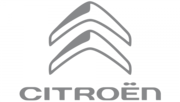Dodge Challenger (2018) Manual
Dodge
Auto'er
Challenger (2018)
Læs nedenfor 📖 manual på dansk for Dodge Challenger (2018) (231 sider) i kategorien Auto'er. Denne guide var nyttig for 26 personer og blev bedømt med 4.5 stjerner i gennemsnit af 2 brugere
Side 1/231

Challenger
O W N E R ’ S M A N U A L
2 0 1 8
Produkt Specifikationer
| Mærke: | Dodge |
| Kategori: | Auto'er |
| Model: | Challenger (2018) |
Har du brug for hjælp?
Hvis du har brug for hjælp til Dodge Challenger (2018) stil et spørgsmål nedenfor, og andre brugere vil svare dig
Auto'er Dodge Manualer

10 Juli 2024
Auto'er Manualer
- Auto'er BMW
- Auto'er Toyota
- Auto'er Opel
- Auto'er Mazda
- Auto'er Audi
- Auto'er Buick
- Auto'er Peugeot
- Auto'er Fiat
- Auto'er Ford
- Auto'er Citroën
- Auto'er Saab
- Auto'er Jeep
- Auto'er Mini
- Auto'er Vauxhall
- Auto'er Chrysler
- Auto'er Pontiac
- Auto'er Lancia
- Auto'er Oldsmobile
Nyeste Auto'er Manualer

15 Januar 2025

14 Januar 2025

13 Oktober 2024

12 Oktober 2024

6 Oktober 2024

6 Oktober 2024

14 Juli 2024

14 Juli 2024

14 Juli 2024

13 Juli 2024